
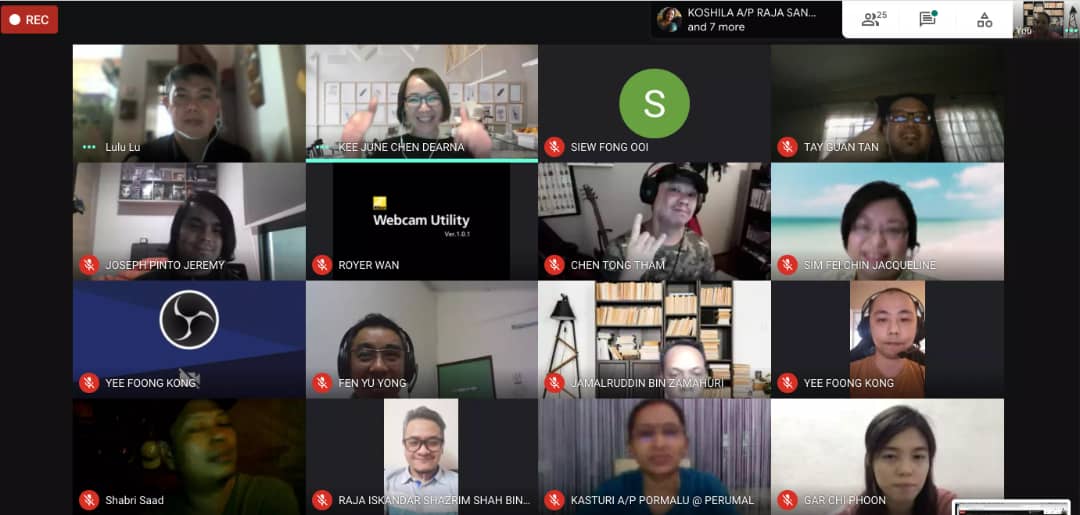
Dr Aloysius (first from top left) with the participants
UTAR Centre for Immersive Technology and Creativity (CITC) Chairperson Dr Aloysius Yapp was invited by Tunku Abdul Rahman University College (TAR UC) to give a research talk on “Immersive Technology For Heritage and Culture Preservation” on 18 November 2020 via Google meet.
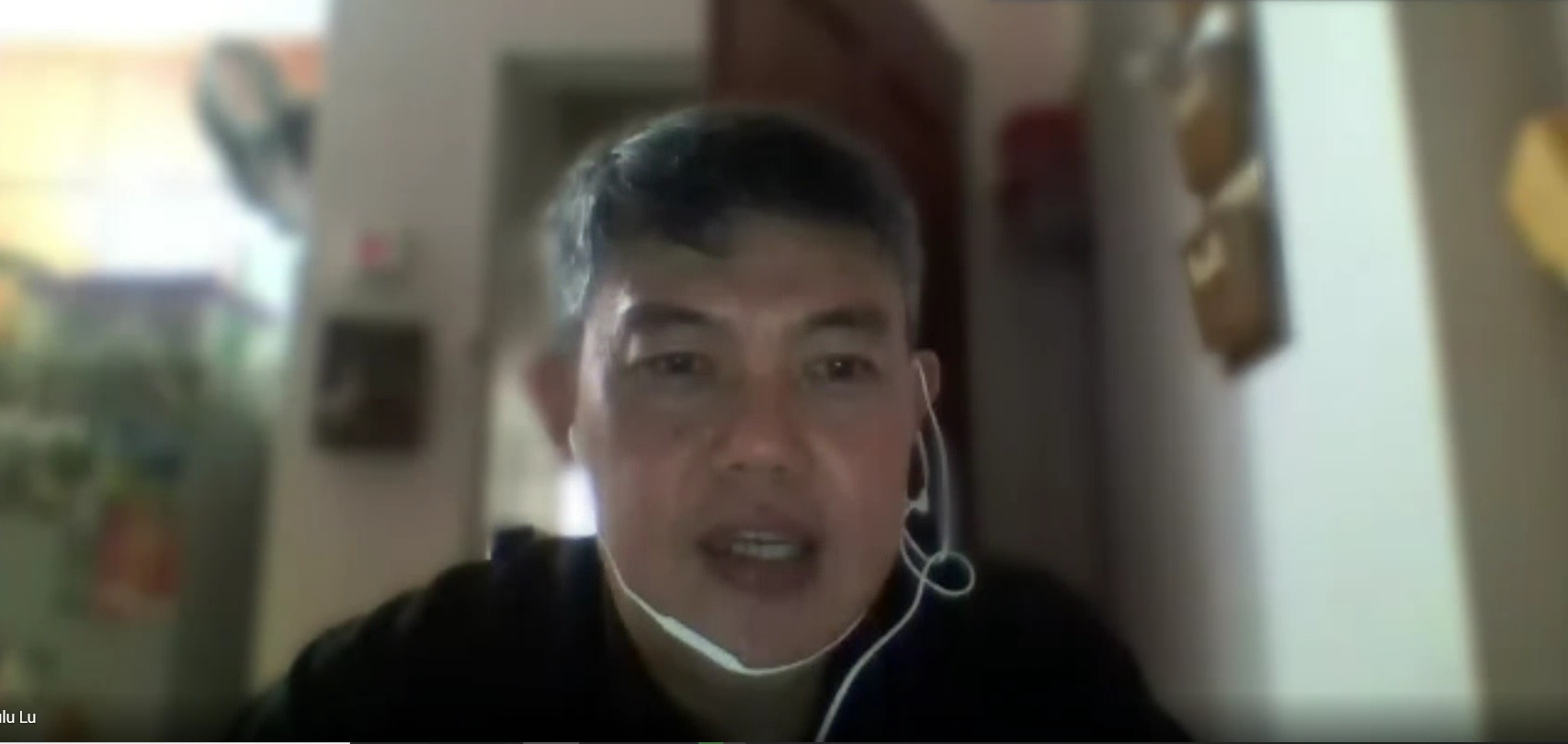
Dr Aloysius during the talk
In his talk, Dr Aloysius first presented to the participants a simulated environment developed in his project. He mentioned that virtual reality (VR) was just a concept 20 years ago. But it has attracted the interest of investors and the general public in the last five years. He said, “Immersive technology refers to the art, applied science and engineering that tries to simulate the real world or previsualize a fiction or future world. You need to have art, creativity, applied science, engineering and information technology to produce immersive technology projects.”
Speaking of research, he explained, “When you pick up a research, you need to know its significance. The significance is a major key, which I always share with my members at the research centre. We have been working on it from 2013 until now; we can see that the value of VR had increased throughout the years. We plan to enhance it by using the technology we can reach now especially through the game engine.”
He then shared some of his projects and said, “Our research that mainly focuses on reconstructing rare or disappearing items and culture from my homeland has led me to believe that the virtual world is a cost-effective platform for preserving the things that will one day vanish from this earth. The term connectivity is very important. You need to pick up something that is connected to you as an element to build your research content.” He added, “In designing something new, it is useful to learn from the past.”
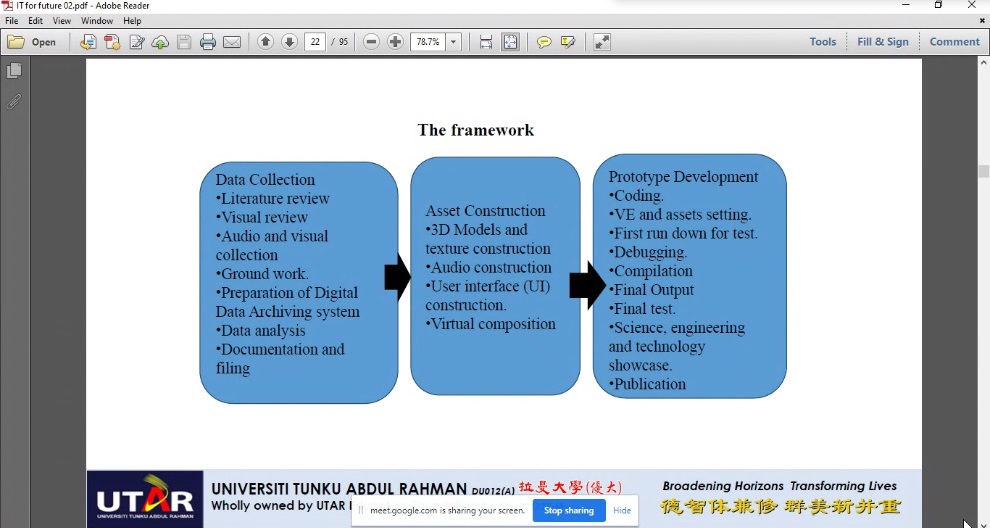
Dr Aloysius explaining the important components in the framework
Furthermore, he mentioned that it was important to understand and build a framework from the beginning. He also pointed out the importance of engaging with the real environment. “I always advise my members to seek inspiration from nature. They need to understand the nature; touch and experience it,” he said. He also added, “You need to collect the data from a real environment, and then convert it into the virtual environment through the virtualisation process.”
Moreover, he highlighted the importance of literature reviews. He explained that reading literature reviews will help one to find the research gap. “You need to read a lot of literature reviews to figure out what is missing. Only then will you realise the significance of your research,” he said. He also introduced his longhouse project, saying that longhouse is valued and traditional. It is also full of stories behind it. “Urbanisation and modernisation had caused a lot of things to disappear. Soon, nobody will know how a longhouse looks like. So we hope that by using our knowledge and practices, we can help to preserve it. Not only the Iban longhouses, but other cultural heritages as well.”
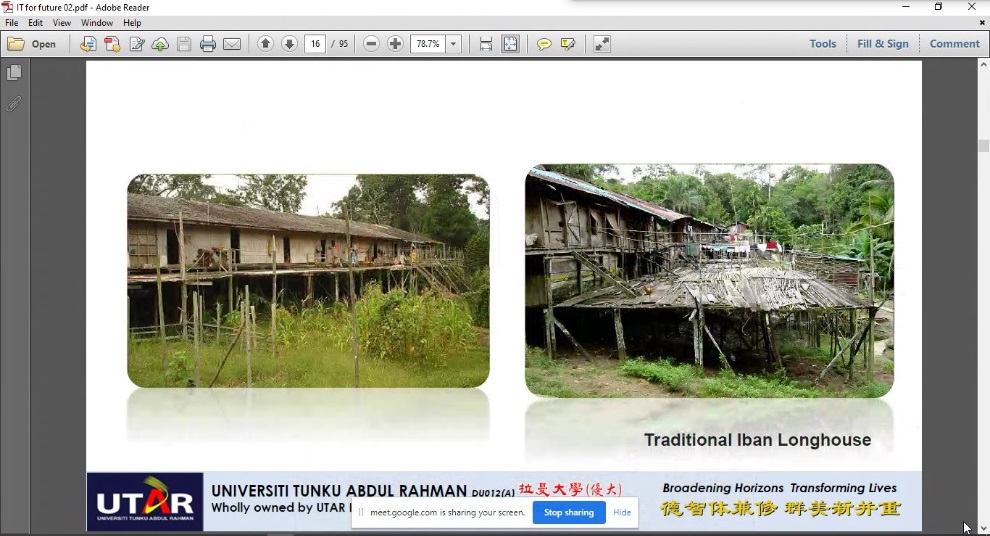
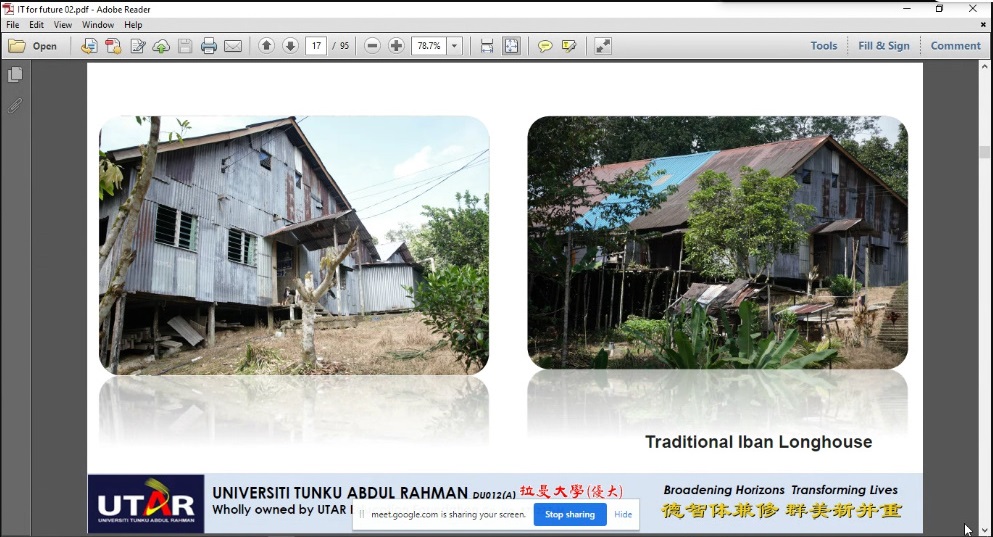
Dr Aloysius presenting the different types of longhouses
He also shared some activities and efforts done to promote VR to the community. For example, the Kuala Lumpur Engineering Science Fair (KLESF) and TECO-UTAR Little Spotlight. He also took the opportunity to present his project titled “3-Dimensional (3D) Virtual Guided walkthrough (VGW)”. The project consists of a non-playable character (NPC) who will act as a guide in the VR walkthrough. He stated that the project could provide a solution for VGW for the local tourism industry. By adopting the project’s framework and workflow, the upcoming research can enhance artificial intelligence in the 3D computer-generated imagery asset as well as the NPC. He also shared the activities engaged with international society and discussed other immersive technologies used in education. The talk then ended with an interactive Q&A session.
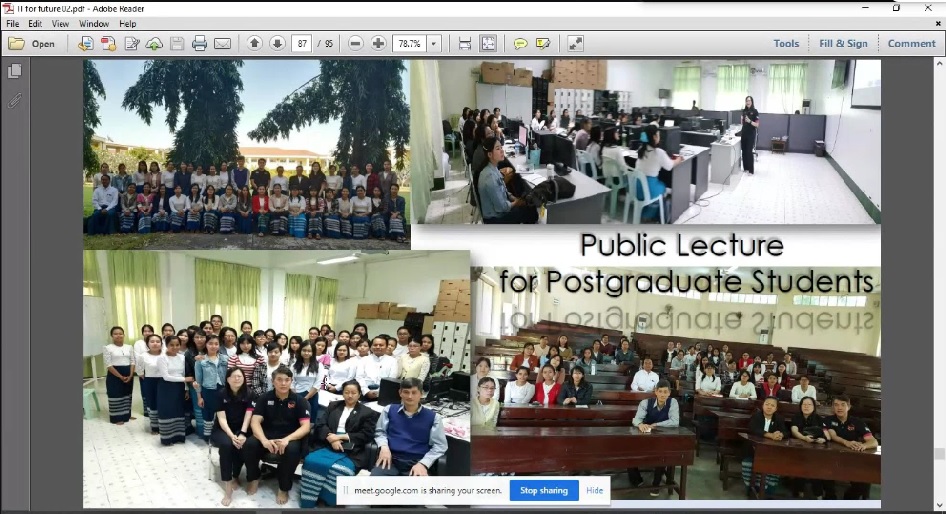
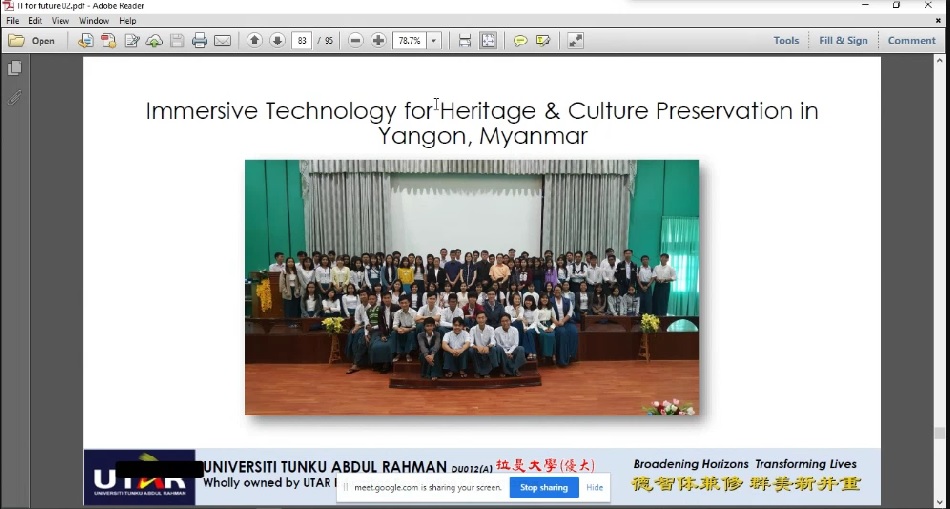
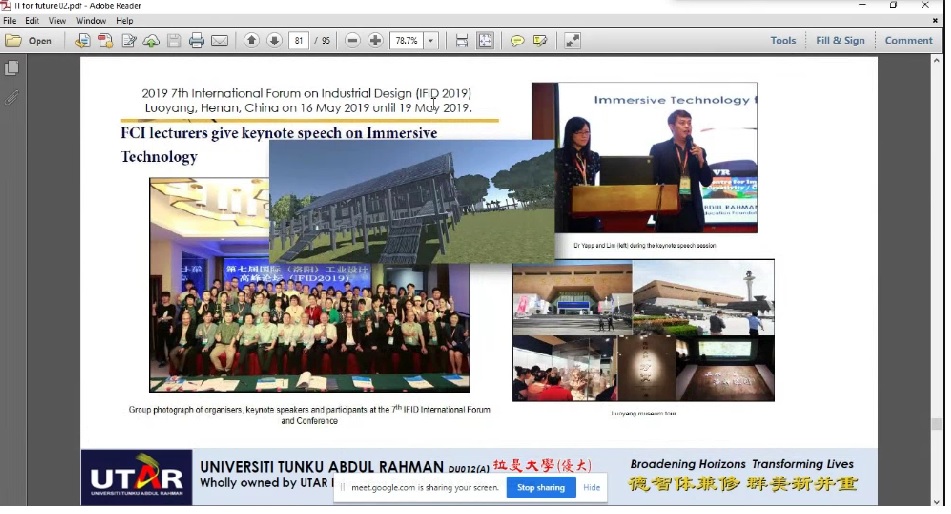
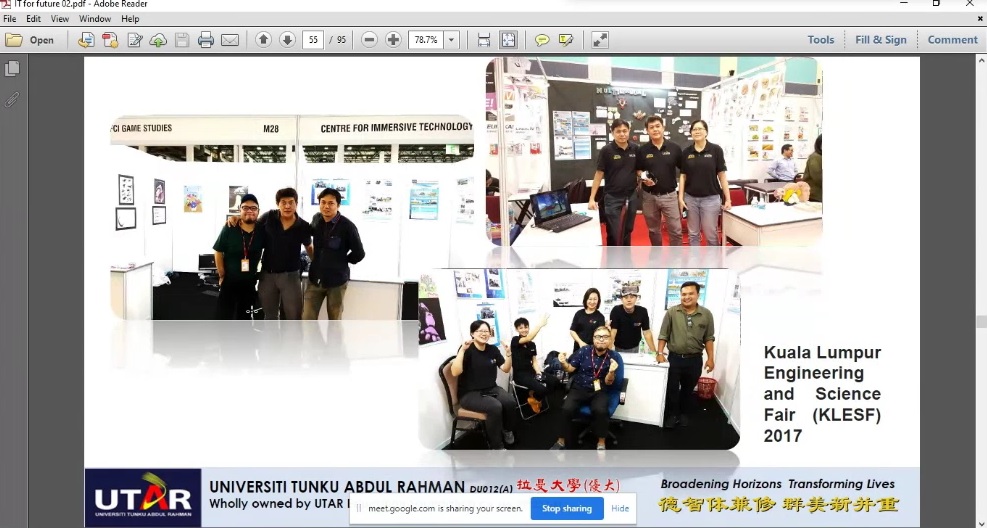
Dr Aloysius sharing the activities he was engaged in
Wholly owned by UTAR Education Foundation Co. No. 578227-M LEGAL STATEMENT TERM OF USAGE PRIVACY NOTICE